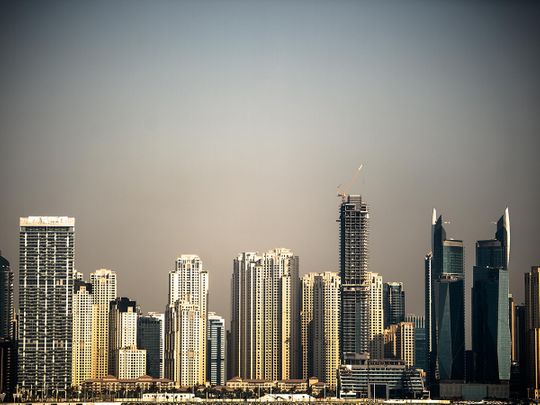
The Dubai government never stops reinventing the wheel to maintain its position as a regional centre for economic excellence.
The urban masterplan – which serves as a talking point for development and attracting investment – has been revised seven times since 1960 (commonly called the ‘Harris masterplan’ after its developer John Harris) to keep pace with Dubai’s ambitions and its desire to be ahead of the demand curve.
The last revision, in March 2021, will cater to demands by 2040 and has set a target of making Dubai the ‘best city for living in the world’.
Dubai has crossed several milestones with its earlier masterplans and even set trend-setting targets. A case in point is the Palm Jumeirah that resulted in new land being dredged out of the sea and built on. Innovation has been at the heart of these plans, as the Palm was initiated by Jebel Ali Free Zone Authority, which changed to Jebel Ali Properties. That evolved into Palm developers and finally Nakheel.
Hill International provided project management services for that development, which was in many ways a cornerstone of Dubai’s fourth urban masterplan.
For the 2040 Dubai masterplan, it is still early days on what the built-up area will finally be. However, the Dubai government has cherry-picked five areas for special focus - Deira and Bur Dubai; Downtown and Business Bay; Dubai Marina and Jumeirah Beach Residence; Expo 2020 Centre; and Dubai Silicon Oasis. Under the plan, the emirate’s population is forecast to rise to 5.8 million compared with 3.3 million in 2020.
No ‘borders’
A major signal coming out of the Dubai 2040 Vision is there will be no ‘borders’, with the Dubai government issuing special visas and sending a message it is now open even more to new methods/procedures to conduct business.
As we speak, a lot of people would in this pandemic still prefer to come to Dubai and either rent or buy. The government has come up with special visas for such residents and this is going to make it easier for them. The pandemic has taught work/business can be done remotely without there being a decrease in output.
Residents in Dubai, unlike for many others elsewhere, can still go to a gymnasium, dine outdoors, go for shopping, play golf, go cycling and travel freely out of the Dubai airport, while at the same time having easy access to high standards of healthcare and adequate beds in hospitals for any medical attention they require.
You can work for an Asian or a North American company from Dubai without there being the need of an office environment. Dubai’s new visa rules – along with its sheer geographic location – will provide all the freedom for an entrepreneur or an office employee they would aspire and pursue any business they want. This scenario will create a new demand for housing, recreation, leisure, entertainment and travel.
Some challenges too
Despite Dubai boasting some of the finest infrastructure and available capacity, there will be headwinds for the emirate’s plans to attract “additional millions” of tourists by 2040. Some people would still prefer to spend their summers in Europe and the US.
However, the government is making it easier for the residents to spend summers here by offering in-door skiing, basketball and other sporting pursuits. The new population in Dubai over the next two decades will help sustain all the real estate that has been built, including the iconic structures of entertainment like the opera house and the Coca-Cola arena.
The drop in population due to Covid-19 related issues will be filled up with new demand to come… sooner than later.









